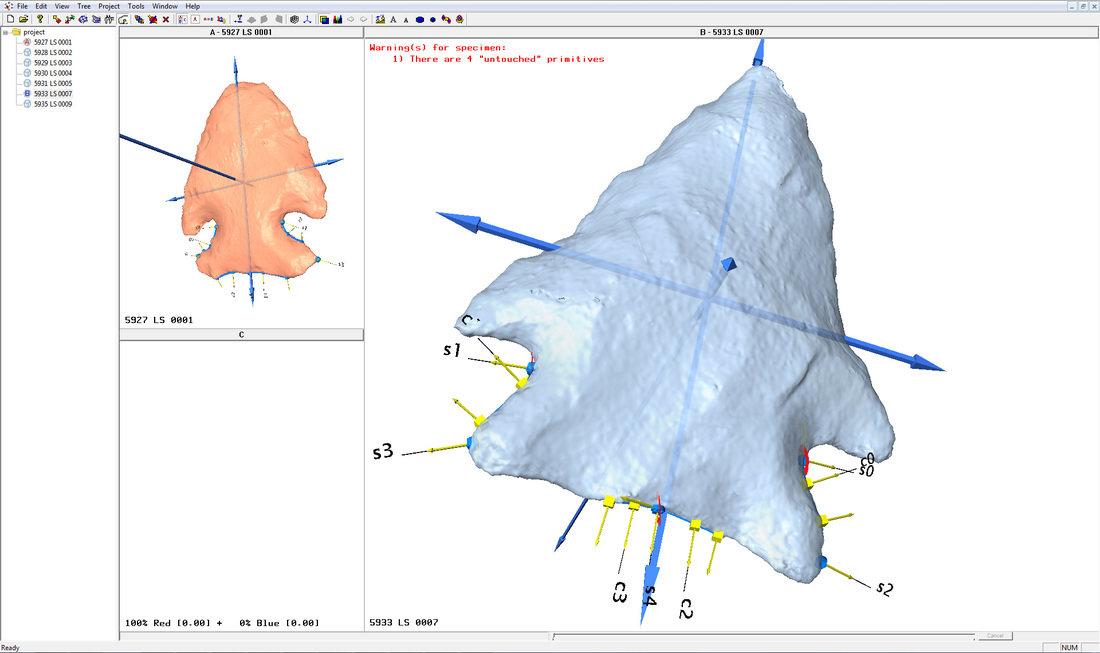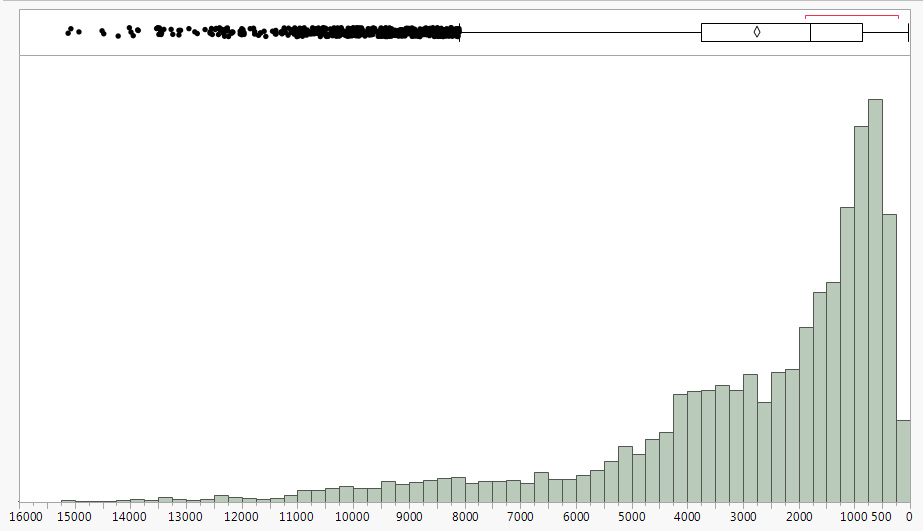I wanted to post this histogram showing the distribution of the ~9,100 dates (intercepts) currently in the radiocarbon compilation (here's the map of the dates I made yesterday). There's a pretty clear trend of an increasing number of dates through time. Part of that, I think, almost certainly reflects the emphasis that archaeology in the Eastern Woodlands places on the Woodland and Late Prehistoric/Mississippian societies that largely post-date 2000 RCYBP (and the fact that those societies tend to produce large sites with lots of datable deposits). But I think the chart below, as unrefined as it is, is probably also telling us something very basic about demographic change. There's an inflection point in the number of dates toward the end of the Middle Archaic period (about 5500 RCYBP) that corresponds in time to when we see (generally) more intensively occupied sites, indicators of decreasing mobility, and increasing use of plants that are later domesticates. Yes, I'm saying intensification.




 RSS Feed
RSS Feed
